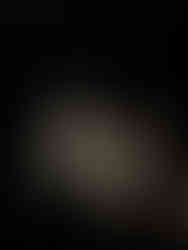CHINA’S TERRACOTTA ARMY CONQUERED EUROPE
- Seramik Türkiye

- 19 Haz
- 3 dakikada okunur
China, which has the third most powerful army in the world, conquered Brussels, the heart of Europe, with its 2200-year-old army of Terracotta Soldiers. The exhibition, featuring replicas of the terracotta statues buried in the tomb of Qin Shi Huang, who united China under a single empire for the first time, was opened to visitors in Brussels between 9 October 2024 and 9 March 2025.
FATMA BATUKAN BELGE
Fotoğraflar: ALP BİLGİNALP
China, one of the largest economies in the world with a population of 1.5 billion, has one of the strongest armies in the world. But 2200 years of ancient terracotta soldiers and art were enough to conquer the heart of Europe. "Terracotta Army and the First Emperor of China", which was exhibited at the exhibition and trade center Tour & Taxis for five months, was the most comprehensive exhibition created on the life of Qin Shi Huang and the tomb complex in Xi'an. This exhibition, which attracted crowds in Naples in 2017 and Milan in 2019, arrived in Brussels to closely introduce one of the world's greatest archaeological treasures.
In the exhibition, 300 replicas of terracotta soldiers, chariots, horses, weapons and various objects produced by craftsmen from Xi'an, which were produced and buried in the tomb to protect Emperor Qin Shi Huang in his afterlife, were exhibited. In fact, it is estimated that there are 8000 soldiers, 130 chariots with 520 horses, and 150 cavalry horses, most of which are still underground in the excavation area of the necropolis. In the exhibition in Brussels, the necropolis environment was reconstructed in order to revive the unique atmosphere of the army buried in the ground, and 170 life-size sculptures were exhibited in this environment enriched with light and sound show.
The statues of a garrison of archers, cavalry and horses are all different from each other. Their height, uniforms and hairstyles vary depending on rank. Each of the terracotta soldiers, whose height varies between 183-195 cm, has different facial features; this indicates that the artists created each figure inspired by real people. The brownish gray character of Terracotta Soldiers is deceptive. Because initially they were painted with bright colors such as pink, red, green, blue, black, brown, white and lilac, but over time the layers of color were shed. The Department of Restoration, Art Technology and Conservation Sciences at the Technical University of Munich has been conducting research in collaboration with the Shaanxi province in China for nearly 30 years. They spent years working intricately on tiny remnants of paint to dissolve and reconstruct the warriors' layers of paint and find ways to preserve them. In this way, we have information about what the statues looked like when they were first made.
The first soldiers of the Terracotta Army were found by chance by farmer Yang Zhifa and his brothers, who were digging a water well in the region in 1974, and the first person to identify them was archaeologist Zhao Kangmin. In an exclusive interview shown at the exhibition, Zhifa expressed his feelings and key moments about this priceless discovery that both changed his life and shook the world of archaeology. In addition, the production stages of the sculptures were vividly explained with ceramic figures in the exhibition.
Although a part of the area where the statues are located, which was included in the World Cultural Heritage List by UNESCO in 1987, is open to touristic visits, work continues in other parts. Archaeological work in the necropolis was planned to be completed by 2020, but it is still ongoing. Emperor Qin Shi Huang's tomb has not been opened yet; archaeologists are concerned that the excavation could damage the tomb and lose vital historical information, and they do not want to repeat the mistakes Heinrich Schliemann made in the Troy excavations in the 1870s. Schliemann destroyed many traces due to his haste and naivety.
Moreover, there may be deadly traps to protect the Emperor's tomb from intruders. Ancient Chinese historian Sima Qian wrote about 100 years after Qin Shi Huang's death: “Palaces and scenic towers were built for a hundred officials, and the tomb was filled with rare artifacts and wonderful treasures. Craftsmen were ordered to make crossbows and arrows to shoot at anyone who entered the tomb. Mercury; simulating hundreds of rivers, the Yangtze and the Yellow River, and the great sea were set to flow mechanically.” The part about mercury may seem like an empty threat, but scientific studies reveal that the concentration of mercury around the tomb was well above normal.
The tomb of the first emperor is sealed for now, but the Terracotta Army, one of the greatest archaeological discoveries of the 20th century, constitutes a turning point in our understanding of the past by providing a new perspective on the art, culture and history of the Chinese Empire.





























Yorumlar